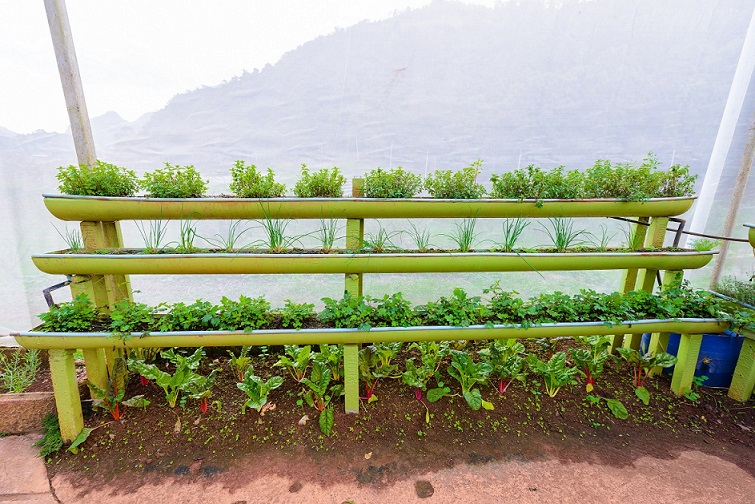Vertical walls of decorative vegetation have been popular in Europe and other countries with high-density cities, where ground cover is at a premium for years.
Professional installations on a large scale — such as the 24-storey Tree House in Singapore, Patrick Blanc’s CaixaForum in Madrid, the towering green wall at One Central Park in Sydney and the Centro Commerciale Fiordaliso shopping centre in Rozzani, Italy, a 1,263-square-metre vertical garden containing 44,000 plant and moss varieties — have even broached the realm of living, breathing, public art.
On home soil
But they’ve also taken off on a domestic level in the wide-open spaces of Australia — as an affordable and environmentally friendly home project.
Removable wall-fixed units that hook onto fence palings or exterior walls make a vivid outdoor addition.
They also offer the benefit of being relatively manageable on a small scale and, if renting or moving house, are also portable.

What you’ll need to get started
Create your own wall unit with a wooden board, removable planters, plantings and potting soil, combined with a little time and ingenuity.
Or you could purchase vertical-garden freestanding green wall systems. Offered in a range of sizes, they are available from most hardware stores and nurseries.
Your choice will be dependent on budget, DIY challenge or capability levels, and the size and style of your residence,
Ready-made walls systems, many including their own pots and river pebbles, suit most types of foliage.
They can be mounted on the wall or floor and provide carbon dioxide-producing living systems that are popular as private screening for indoor use or as an easy-maintenance outdoor feature.
Plant types that are inclined to climb
Choose plant varieties that are profuse, offer contrasting colours, are hardy and resistant to temperature extremes and seasonal conditions.
Depending on the placement of your vertical garden, ornamental plants that are suited to shady and sunny conditions work well.
For shade, these include leafy ferns, such as Boston and bird’s nest; begonias; orchids; Mondo grass and Australian native violet.
In sunny conditions, lush suggestions, including miniature agapanthus; bromeliads; liriope, dianella; ivy; and festuca grow best. Add seasonal colour with pansies, petunias and dwarf marigolds.
Edible plantings: soft lettuce, some kales, wild rocket, English spinach, strawberries and miniature tomatoes work well in sunny spots.
Herbs such as thyme, mint, parsley, tarragon and oregano, will also keep your fresh pantry supplies well-stocked.
Vertical garden upkeep
Regular maintenance, including light daily watering, exposure to sunlight and air work their natural magic.
Pruning, weeding and removing dead foliage, and checking for pests or disease, will also ensure your vertical Garden of Eden continues to thrive on a manageable scale.

